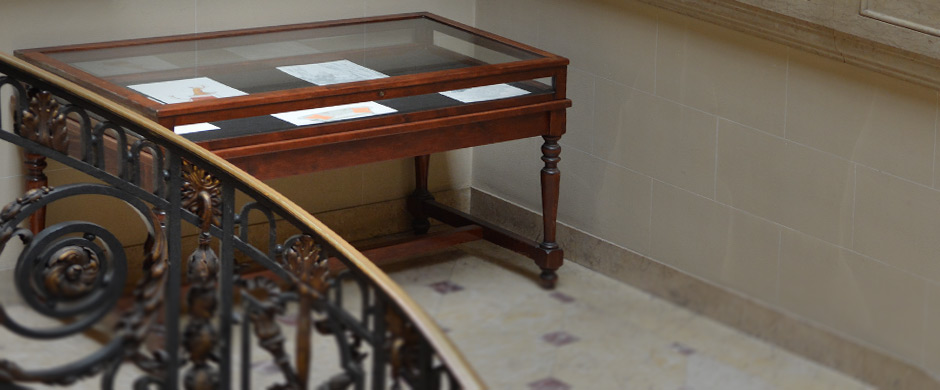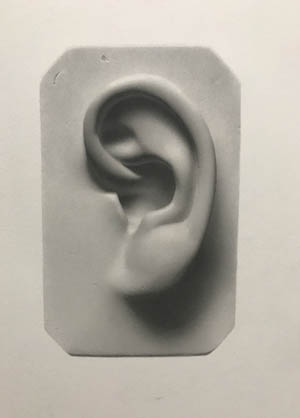 | On Display
| On Display

Display Cases in the Great Hall: Exhibition Archive
ACADEMY
15 January, 2019 - 15 February, 2019
Master Drawings by ANDREW SHEARS
 Classic academic foundation drawing normally begins with simple and basic forms, careful observation, and practice. Sometimes an artist spends hours mastering the idea of a freehand circle drawn without touching the sheet, or suggesting volume in a carefully arranged still life, composed of objects from the studio, desk, or breakfast table, offering a window onto quotidian practice. The hardness of the pencil point reveals the softness of a paper surface, as it yields to the movement of the artist’s hand.
Classic academic foundation drawing normally begins with simple and basic forms, careful observation, and practice. Sometimes an artist spends hours mastering the idea of a freehand circle drawn without touching the sheet, or suggesting volume in a carefully arranged still life, composed of objects from the studio, desk, or breakfast table, offering a window onto quotidian practice. The hardness of the pencil point reveals the softness of a paper surface, as it yields to the movement of the artist’s hand.
These strokes are captured in Andrew Shears’s drawings. He practices within a classical atelier, or studio, where he begins graphite studies without preconceived ideas, as pure observation from life. Working with time constraints, Shears blocks out the form, then builds up the exterior contours, moving from the center of the figure, the torso and pelvis, to the edges of the body, with hands, thighs, and wisps of hair. The process leaves the artist’s initial guidelines invisible. The clarity of a final study remains.
Using graphite or red oil pencil in his nude studies as in his finished drawings, Shears focuses on shaping the planes and curves of a physical body, in a way that conveys the sense of a character or person within that body. Sensitively observed from life, the drawings show equal respect for the integrity of form and the classical anonymity of various individuals.
Ear Study (verso), drawn from a classical cast, reminds of the intensity of similar ear studies, or drawings of a sculpted face, by 17th century artist Jusepe Ribera, a master of academic drawing who also played with classical forms in red chalk, or fantastical studies in pen and ink. Shears’s red oil pencil drawing of entwined Siblings wrapped together with a massive snake shows his powerful imagination at play in a masterful sheet, mixing fantasy with classical subject matter, and academic virtue.
Curated by Lisa A. Banner
Courtesy of the Artist and C.G. Boerner
Contact the Institute
Building Hours
Contact Information
If you wish to receive information on our upcoming events, please subscribe to our mailing list.



